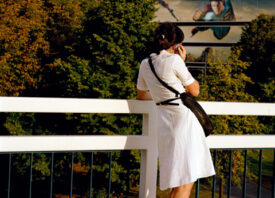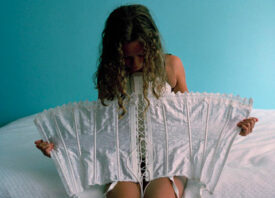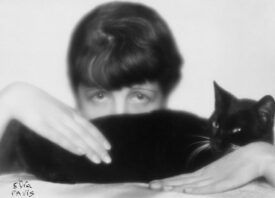Search this site
Martin Schoeller’s Portraits of Holocaust Survivors Are As Urgent As Ever

“All people are created in the image of God. We are all the same. Regardless of color or religion, we should try to live in peace together. It is very hard, I know, but we should try harder to get along.”

“Do not ever forget, but try to forgive. In this world, there are good people and bad people. Try to find the good ones.”
When Maurice Gluck was three years old, his family attempted to flee Antwerp but were stopped at the border. It was 1941, the year that marked the beginning of the Holocaust. Maurice’s mother brought him to a man in Brussels, with whom he would remain hidden. His mother and father were taken to concentration camps.
Three years later, he was reunited with his father. A few months passed, and a woman named Helen, introduced to Maurice as his mother, joined them. It wasn’t until his Bar Mitzvah, years down the road, that Helen told Maurice that she was actually his mother’s sister. His mother had died in Auschwitz, one of the six million Jews murdered during the Holocaust. After learning her sister had died, Helen looked for Maurice until she found him.
The morning after his Bar Mitzvah, Maurice told Helen that she had been his mother and always would be. “And so it was,” Gluck told Martin Schoeller decades later in 2020, when the photographer collaborated with Yad Vashem, The World Holocaust Remembrance Center, to record the faces and stories of 75 Holocaust survivors. The project marked the 75th anniversary of the liberation of Auschwitz.

“We Jews must be vigilant and always be proud of who we are, because we are the people who survived and they (the Nazis) are the monsters who did not value human life and murdered millions.”
“Meeting these people is history coming to life,” Schoeller says in a virtual tour of an exhibition that took place at the Ruhr Museum in Essen, Germany. While talking with one of his sitters, Marta Wise, he learned that she had been at Auschwitz-Birkenau when it was liberated on January 27th, 1945. She was only ten years old; her sister, Eva, was thirteen.
At that point, the photographer remembered and pulled up a print-out of a famous picture taken that day by the Soviet photographer Alexander Vorontsov. There are thirteen children in the photograph–thirteen of the 7,000 prisoners. “You’re not in this picture, right?” Schoeller asked Wise. “Yes, we are,” she replied. “That’s my sister, Eva, and that’s me.”
They were there for over three months. “Sounds like little time in Auschwitz, but believe me, every minute was like a lifetime,” she told Schoeller 75 years later. Her portrait and the 74 others are now part of the book, Survivors. Faces of Life after the Holocaust, published by Steidl and with a foreword by former German President Joachim Gauck.
As many of the survivors attest, hatred, racism, and xenophobia remain real and urgent threats to humanity. “It is very scary to see what is happening in Europe right now, that antisemitism has come back so strongly,” Schoeller says. “Now more than ever, I feel a great responsibility to fight antisemitism whenever I see it and to do whatever I can to make sure that something like the Holocaust can never happen again.”
In 2020, when the portraits were exhibited at the Ruhr Museum in Essen, Germany, Chancellor Angela Merkel inaugurated the event. More recently, the exhibition moved to Schoeller’s pop-up artist’s space, Projekt 105. “I hope that with this exhibition I will keep the memory and these stories alive,” the artist says.
As Avner Shalev, Chairman of the Yad Vashem Directorate, writes in the book, we’ll soon live in a world without Survivors. In time, their testimonies will be passed along to us, as will the responsibility of ensuring they’re not forgotten or erased.
75 years ago, many acted with hatred and violence. Countless people showed indifference. But some, like the man who hid a three-year-old Maurice Gluck, all those years ago, risked their lives to protect their neighbors. Helen found her sister’s son and loved him as her own. “In this world, there are good people and bad people,” Gluck told the photographer. “Try to find the good ones.”
Order your copy of Survivors. Faces of Life after the Holocaust here.

“One has to remember, but to remember responsibly. We should recall not only what happened but also why it happened, so that we can learn lessons and avoid such tragedies in the future. We see antisemitism growing again around the world; we thought it was over after the war, but it is not. There have been genocides and there continue to be genocides. Humanity has to learn to value human life.”

“If someone says that they want to murder you – believe them. Do not trust that hate-incited events like the Holocaust are a thing of the past. Be ever on your guard. Be alert and be vigilant. Take care that history does not repeat itself.”

“It is important to let the world know that Israel is the homeland of the Jewish people. Israel is our home, and we must work to keep it strong and thriving. The Jewish people without a homeland can potentially be threatened with another Shoah.”

“To the young people of the world, I say, do not be swayed by messages of hate, like the messages of the Nazis. It is important for you to learn the truth about what happened during the Holocaust; perhaps you do not know the facts of what really happened then. The future of the world is in your hands. Cling to democracy and freedom.”

“The next generation should learn that the time has come to say that there is no more place for war. If we focus our efforts to raise ourselves up, the world can be radically improved and be a better place for all its inhabitants.”

“We need to learn to love more freely. That is what gives us strength. During the Holocaust, I was separated from my mother. I blamed her because she was not with me and I felt that all my love for her was trapped inside me. It was only many years later when I myself became a mother, that I understood what she must have gone through. I hugged her, and was finally able to love her freely. She passed away a few months later; it was as if she had been waiting all her life for that hug.”

“It is critical for us to learn how to interact with each other with empathy and patience. People should learn to be more forgiving of others in their lives.”
All images © Martin Schoeller


